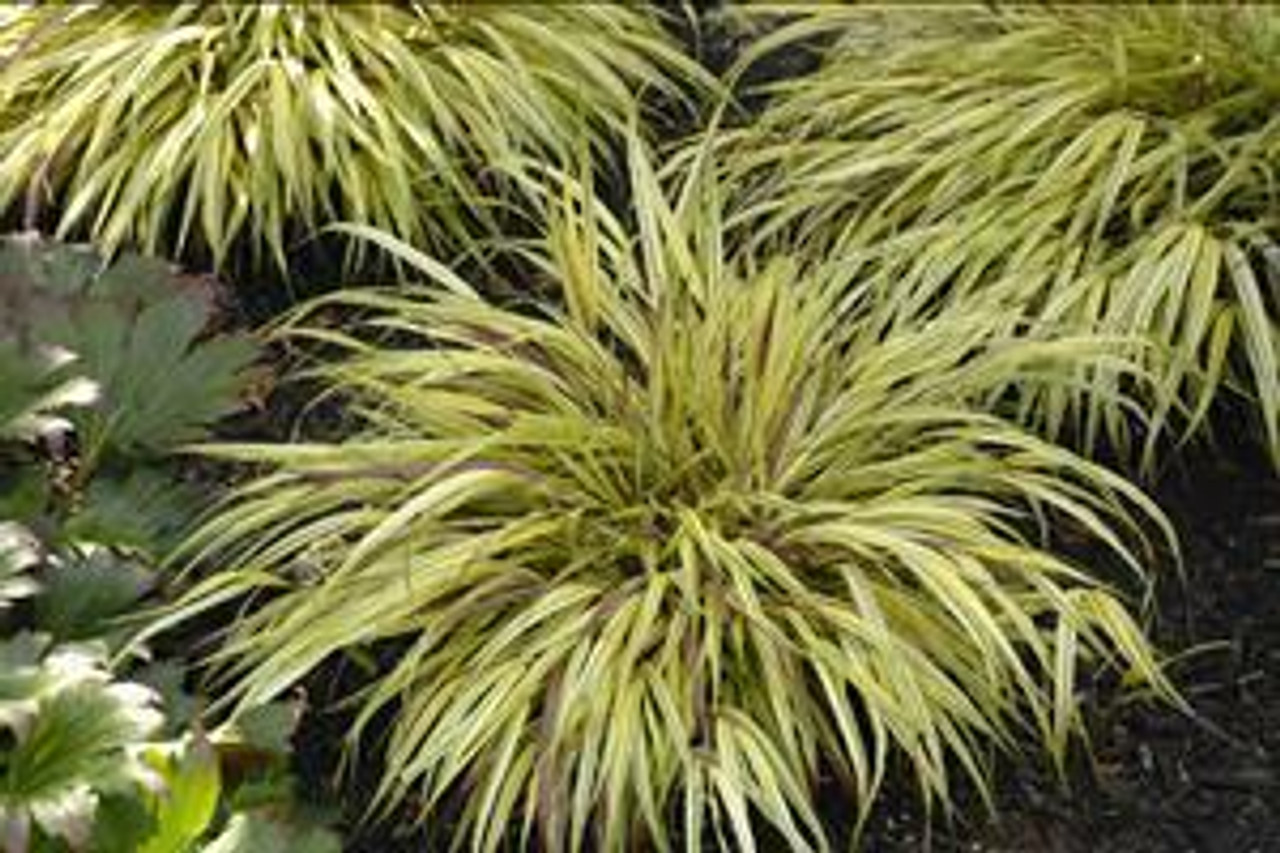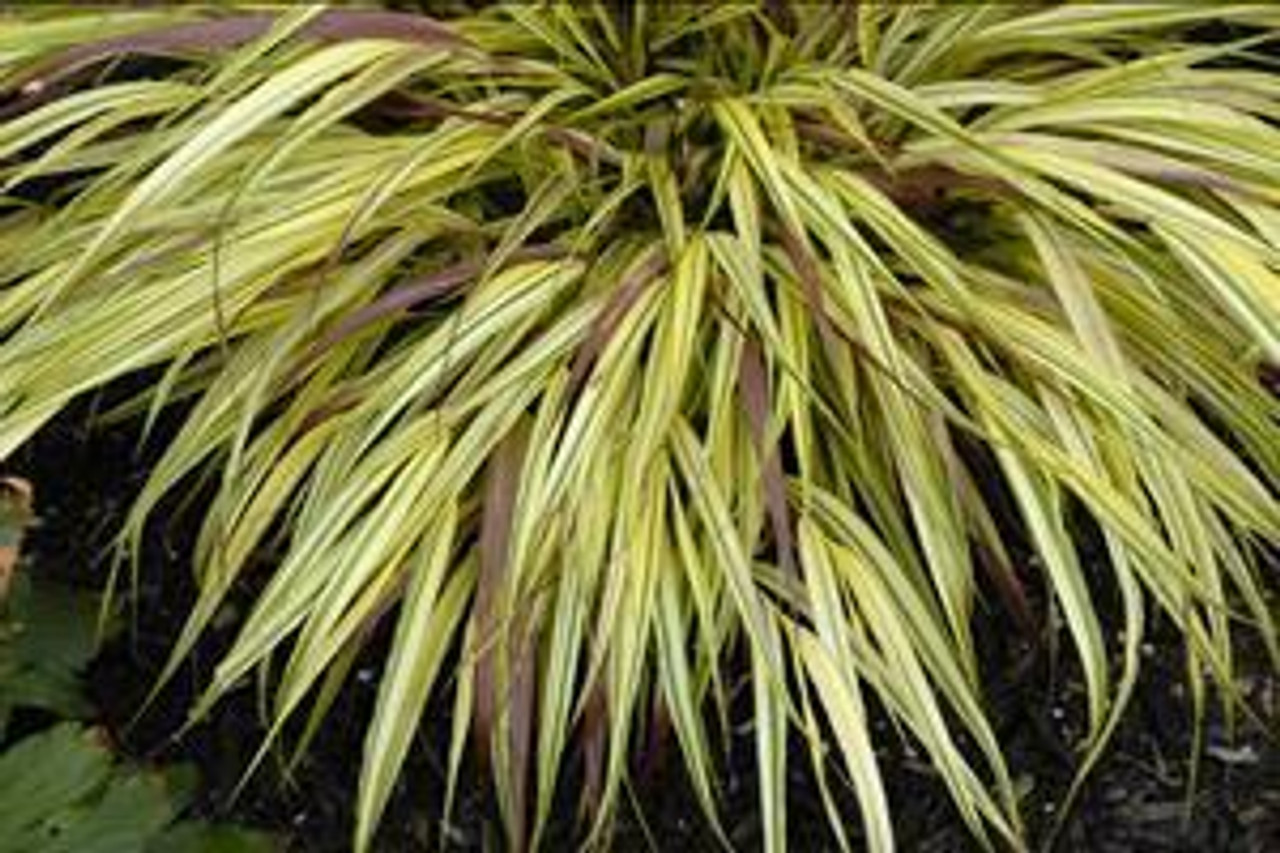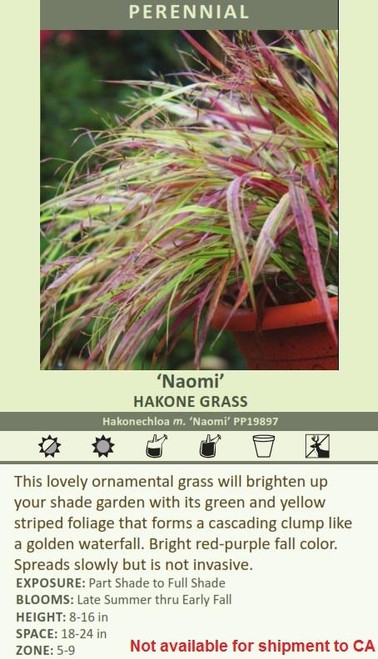Product Description
Hakonechloa macra 'Naomi' PP19897Common Name: Grass-Ornamental, Hakone Grass, Japanese Forest Grass
Zone 5 to 9, Part to Full shade
Plants reach 8 to 16 inches tall and 18 to 24 inches wide. Excellent fall color sets this new cultivar apart from H. m. 'Aureola'. The creamy yellow and green variegated leaves become flushed with reddish-purple tones in fall. The color is most pronounced in cool weather.
Though this does spread by stolens, it is a slow grower and will not rapidly overtake its neighbors. Plant it where it can cascade down slopes, drape over rocks, crawl over the edges of walls, at the front of the garden, or even in containers.
Hakonechloa is grown mainly for its beautiful foliage, though it does produce seed heads. Tiny, inconspicuous reddish brown flower spiklets appear in airy clusters from late summer thru mid-fall.
Not available for shipment to CA
Other Details
The most important part of the plant is its root system. Healthy roots are the foundation of a healthy, vibrant plant. The type of plug container used is based on the specific needs of the plants. Perennials offered as bare root traditionally perform better when planted as bare root.Planted in a specialized mix, potted plants have well established root systems. Top growth stage will vary depending on the current life cycle and time of year when shipped. In Winter and early Spring dormant plants may be shipped. Dormant plants may be planted right away, even before the last frost date.
Most bare root varieties are field grown for at least one season, though Hemerocallis and Hosta are grown for two seasons. The bulk of the soil is removed during the harvesting process and the tops of most varieties are trimmed back to the crown. They are graded, packed in shredded aspen or sphagnum moss and stored in freezers until ready to be shipped.
See our Container Sizes and Bare Root Perennials pages for more information.
Plant information and care is provided in the Overview section, Plant Genus Page and general information is provided in the Planting Care & Guides. Additional questions can be asked on each Plant page.
Plant Spacing: Using the maximum mature spread or width of a plant to guide spacing, ensures space to grow to full size. To fill an area sooner, plant them closer together. Just remember, future thinning or transplanting may be needed.
Water: Keep a close eye on newly planted perennials, especially throughout the first growing year. Most early plant loss is due to too much or too little water!









